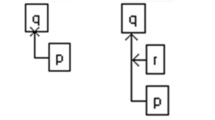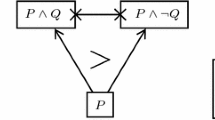Abstract
The tension between rule and judgment is well known with respect to the meaning of substantive legal commands. The same conflict is present in fact finding. The law penetrates to virtually all aspects of human affairs; irtually any interaction can generate a legal conflict. Accurate fact finding about such disputes is a necessary condition for the appropriate application of substantive legal commands. Without accuracy in fact finding, the law is unpredictable, and thus individuals cannot efficiently accommodate their affairs to its commands. The need for accuracy and predictability in legal fact finding has generated a search for formal tools to apply to the task. Among the tools that have been examined are Bayes' Theorem and expected utility theory (Bayesian or statistical decision theory). These tools do not map well onto trials, which in turn has generated an examination of alternative approaches, in particular the story model and the relative plausibility theory. This paper discusses these issues in turn. It elaborates the basic structure of trials in the American tradition; examines the uneasy relationship between trials and such formalisms as Bayes' Theorem and expected utility theory; and introduces the relative plausibility theory as an explanation of the nature of juridical proof.
Similar content being viewed by others
References
Allen, R. (1980). Structuring Jury Decisionmaking in Criminal Cases: A Unified Constitutional Approach to Evidentiary Devices. Harvard Law Review 94(2): 321-368.
Allen, R. (1981). Presumptions in Civil Actions Reconsidered. Iowa Law Review 66(4): 843-867.
Allen, R. (1991). The Nature of Juridical Proof. Cardozo Law Review 13(2-3): 373-422.
Allen, R. (1994). Factual Ambiguity and a Theory of Evidence. Northwestern University Law Review 87(2): 604-640.
Allen, R. (1997). Rationality, Algorithms and Juridical Proof: A Preliminary Inquiry. International Journal of Evidence and Proof 1997 (Special Issue): 254-275.
Allen, R., Grady, M., Polsby, D., and Yashko, M. (1990). A Positive Theory of the Attorney-Client Privilege and the Work Product Doctrine, Journal of Legal Studies XIX(2): 359-397.
Allen, R. and Kuhns, R. (1989). An Analytical Approach to Evidence: Text Problems, and Cases. Little and Brown: Boston, MA.
Allen, R., Kuhns, R., and Swift, E. (1997). Evidence: Text, Cases and Problems, 2nd edn. Aspen Publishers: New York, NY.
Byrne, M. D. (1995). The Convergence of Explanatory Coherence and the Story Model: A Case Study in Juror Decision. In Moore, J. D. and Lehman, J. F. (eds.), Proceedings of the Seventeenth Annual Conference of the Cognitive Science Society, 539-543. Erlbaum: Mahwah, NJ.
Kaplan, J. (1968). Decision Theory and the Factfinding Process. Stanford Law Review 20(6): 1065-1090.
Kaye, D. (1980). Naked Statistical Evidence. Yale Law Journal 89(3): 601-611.
Kaye, D. (1982). The Limits of the Preponderance of the Evidence Standard: Justifiable Naked Statistical Evidence and Multiple Causation. American Bar Foundation Research Journal 1982(2): 487-516.
Pennington, N. and Hastie, R. (1991). A Cognitive Theory of Juror Decision Making: The Story Model. Cardozo Law Review 13(2-3): 519-557.
Rashkin, D. and Yuille, J. (1989). Problems in Evaluating Interviews of Children in Sexual Abuse Cases. In Ceci, S. J., Ross, D. F., and Tolia, M. P. (eds), Perspectives on Children's Testimony, 184-207. Springer-Verlag: New York, NY.
Savage, L. (1972). The Foundations of Statistics. Dover Publications: New York, NY.
Shafir, Eldar (1994). Uncertainty and the Difficulty of Thinking Through the Disjunction. Cognition 50: 403-430.
Thagard, P. (1992). Conceptual Revolutions. Princeton University Press: Princeton, NJ.
Tversky, A. and Shafir, E. (1992). The Disjunction Effect in Choice Under Uncertainty. Psychological Science 3(5): 305-309.
Author information
Authors and Affiliations
Rights and permissions
About this article
Cite this article
Allen, R.J. Artificial intelligence and the evidentiary process: The challenges of formalism and computation. Artificial Intelligence and Law 9, 99–114 (2001). https://doi.org/10.1023/A:1017941929299
Issue Date:
DOI: https://doi.org/10.1023/A:1017941929299




